|
Horst Riebenstahl
The 1st Panzer Division
A Pictorial History 1935-1945
SCHIFFER MILITARY HISTORY
West Chester, PA
Translated from the German by Dr. Edward
Force, Central Connecticut State University.
Copyright @© 1990 by Schiffer Publishing Ltd.
Library of Congress Catalog Number: 90-62980.
This title was originally published under the title,
Die 1. Panzer-Division im Bild,
by Podzun-Pallas-Verlag GmbH, 1986.
INTRODUCTION
After the formation of our 1st Panzer Divisionover fifty years ago,
and of the Comradeship Organization in 1951, this second volume of photographs,
in addition to our Divisional History, now appears.
We thank our comrade Horst Riehenstahl for his initiative and his many
years of tireless work in gathering 700 photographs of the "history
and fate of the 1st Panzer Division" from 1935 to 1945.
Many comrades, to whom we owe our thanks, have assisted by providing
photos and giving information on names and places.
This photo volume gives evidence of the unimaginable achievements and
sacrifices of our soldiers in World War II, who staked their health
and their lives for our German fatherland in duty, loyalty and comradeship.centralsector.narod.ru
Countless comrades and many incidents in war and peace come to life
again and give evidence that the achievements of our renowned 1st Panzer
Division could only be attained through the service of all its officers
and men.
In grateful remembrance of fallen and deceased comrades, and as a reminder
and warning to the survivors and subsequent generations to devote themselves
always to the maintenance of freedom, peace and justice.
Peter-Otto Kruse
Oberleutnant of the Reserve,
Retired Chairman of the Comradeship Organization of the 1st Panzer Division
Comrade Benefit Society e.V.
FOREWORD
On the history of the 1st Panzer Division, there appeared in 1962 a
detailed text volume (Stoves), plus a book
in 1972 about the 2./Pz.Reg.1 (Kersch), and in 1976 a first volume of
pictures appeared, likewise compiled by Rolf Stoves and long since out
of print.
Through years of collecting and searching, I was able - originally for
my own purposes - to gather over 2,500 photos of our division, of which
I chose 700 for this new photo documentation.
All the pictures show the life and combat of all units of the 1st Panzer
Division, including the supply units, and are thus a completion, an
extension of the previous units.
This new collection is organized by years, from the foundation to the
war's end. Every yearly section is introduced with an outline of the
important events.
My thanks go to the many helpers from all division units and the widows
of deceased comrades, through whose support the publication of this
memorial volume became possible.
My thanks also go to the publishers for their decision to add another
volume to the previous publications.
Horst Riebenstahl
1941
The first half of the year was filled with training
and refreshment in beautiful East Prussia. The campaign against Russia,
which began on June 22, brought back the fast advances of the former
Blitzkrieg campaigns, but as of the autumn came the awareness that the
Red Army's resistance grew stronger all the time and weather, space
and scope would not allow a quick victory. The two main goals - of the
division too - of Leningrad and Moscow could not be taken. At the end
of the year, the division, under attack and still insufficiently supplied,
was embroiled in defensive action in the "Lama position" northwest
of Volokolamsk in temperatures down to 40 below zero.
| To 6/21/1941: |
Training in the previous
areas. |
| 6/22/1941: |
Russian campaign begins. Under the
leadership of the XXXXI. Panzer Corps the division moves out of
the Memelland east of Tilsit and across the Baltic area toward Leningrad. |
| 6/23-26/1941: |
Tank battle on the Dubyssa. |
| 6/28/1941: |
The Düna
is crossed. |
| 7/5/1941: |
Combat along the Stalin Line near Ostrov. |
| To 7/12/1941: |
Forest combat toward Luga.centralsector.narod.ru |
| 7/14/1941: |
The Luga is reached near Szabsk in
bitter fighting, a bridgehead held against numerous Russian counterattacks. |
| 7/15/1941: |
Generalmajor Krüger
takes command of the division. |
| 8/8/1941: |
Attack on Leningrad begins. A tough
fight to make any progress. |
| 8/21/1941: |
Krasnogvardeisk (south
of Leningrad) is occupied. [Выделено мной
- А.Т. Ну-ну.] |
| 8/23/1941: |
Breakthrough in the outer defensive
belt around Leningrad; defensive action until September 8. |
| 9/9/1941: |
Attacks on the city begin. |
| To 9/15/1941: |
Hard fighting around the Duderhof Hills. |
| 9/16/1941: |
Withdrawal of division and transfer
(road and rail) to Army Group Center near Byeloy (north of Smolensk)
begin. |
| 10/2/1941: |
Attack toward Moscow. |
| 10/7/1941: |
The upper Dniepr is crossed. |
| 10/13/1941: |
Kalinin, south of the Volga Basin,
is taken. Hard fighting there until the end of November. |
| 12/1/1941: |
Attack toward Moscow-Volga Canal north
of Moscow. |
| 12/6/1941: |
Fighting broken off, withdrawal combat
at Klin. |
| 12/16/1941: |
Removal to Ruza sector, to stay till
year's end. At this time the units are put in order and strengthened
with replacements, but the lost materials cannot be replaced yet. |
[Фотографии не в том порядке, как в книге - А.Т.]
| Men of Pz.Pi.Btl.37 have brought in prisoners near
Luga, July 1941. |
 |
| The writing-room wagon of WK 3./81 near Luga, July
1941. |
 |
| Burial of comrades on Hill 105 (S.R.113) on August
8, 1941. |
 |
| Members of the 1st Panzer Division fix a leaking fuel
tank on their truck during the advance to Krasnogvardeisk, August
1941. |
 |
| Fuel supplies for the 1st Panzer Division have been
brought forward by the GI.centralsector.narod.ru |
 |
| Quadruple guns on a 12-ton towing tractor of the 1st
AA Unit 83, Kolpnovo area, August 1941. |
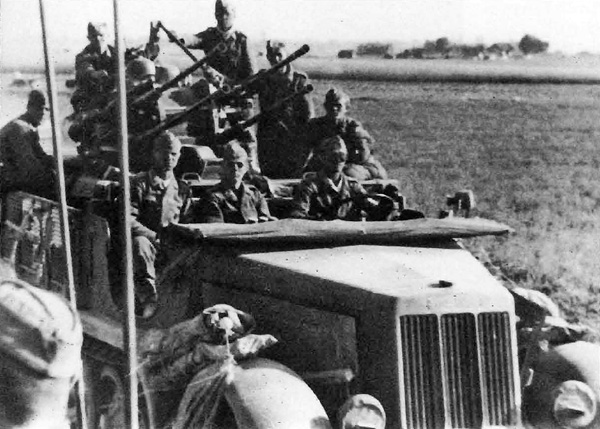 |
| Men of Panzer Engineer Battalion 37 in the big tank
trench at Pisma, August 23, 1941. |
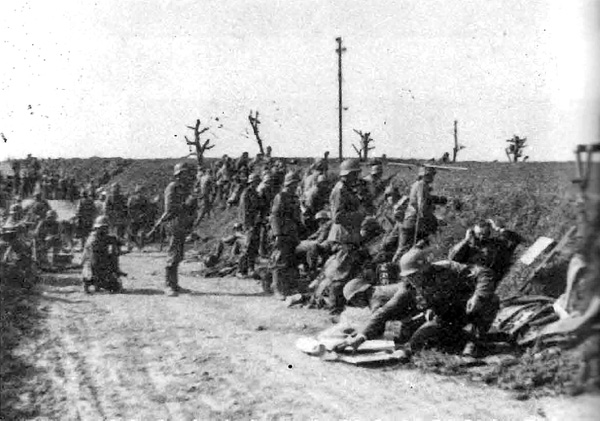 |
| Panzer Engineer Battalion 37 with S.R.113 and S.R.1
in the great tank trench of Pisma. One of the men is using a trench
periscope, August 1941.centralsector.narod.ru |
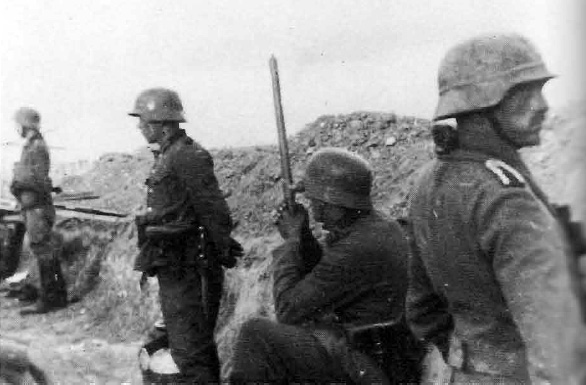 |
| A heavy infantry gun of the 702nd near Pisma. The
gun belongs to Leutnant Cochoy`s group, August 1941. |
 |
| Major von Wolf questions a female Commissar, Pysma
area, August 1911 |
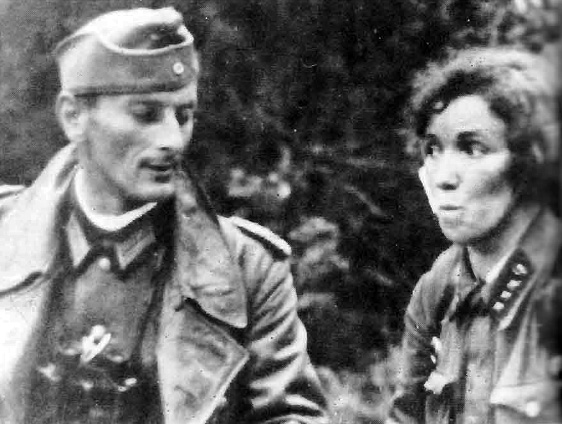 |
| This KV I tank was towed away by The Tank Workshop
Platoon of Panzer Regiment I and repaired. |
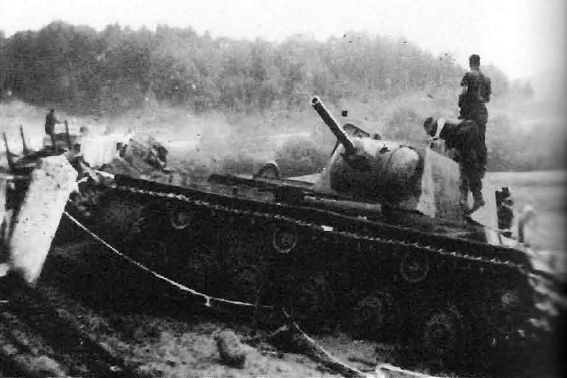 |
A Panzer III of the 6./Panzer Regiment 1 is repaired
at the advance tank workshop. Tank fitter Kurt Reiser is kneeling,
August 1941.
|
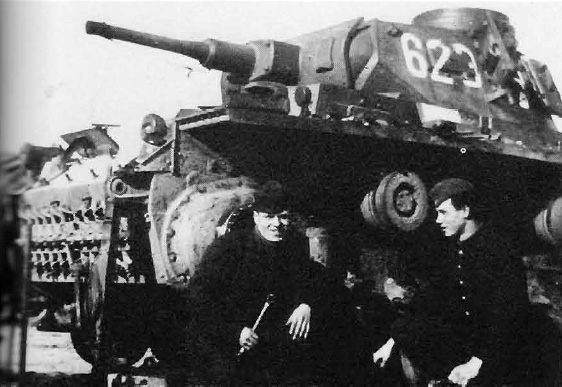 |
| A heavy machine gun of Panzer Engineer Battalion 37
in the tank trench at Pisma, early September 1941. |
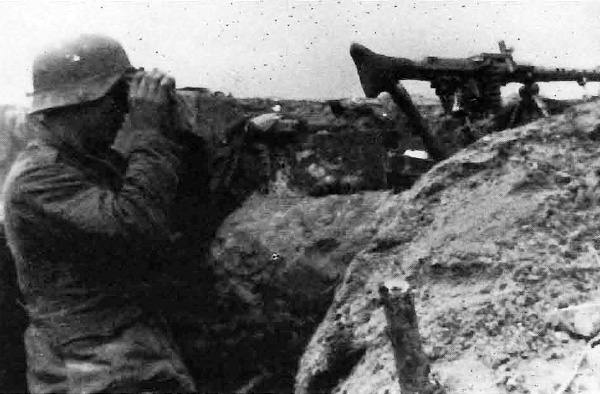 |
| A Panzer III of Panzer Regiment 1 passes a Russian
KV II tank, carrying its camouflage with it, Duderhof area, August
1941. |
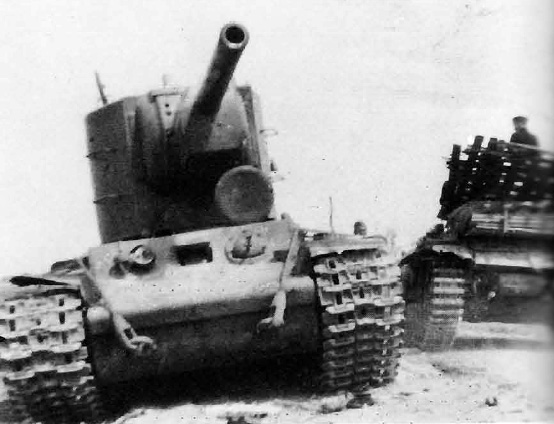 |
| Russian bunker guns on the Duderhof Heights, captured
by the 2./Pz.Pi.Btl. under Company Chief Oberleutnant Clavekorn,
of the battle group of Major Dr. Eckinger, on September 9, 1941. |
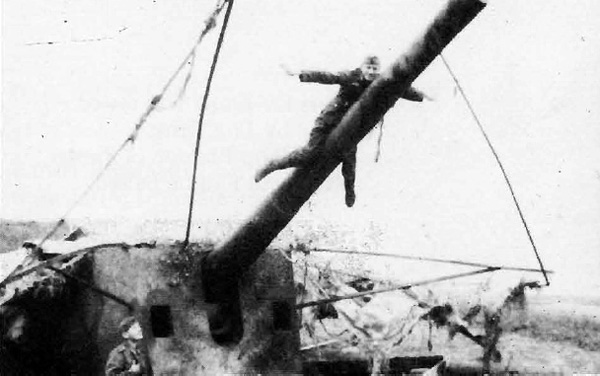 |
| A destroyed KV I outside Leningrad, September 1941. |
 |
A launcher of Panzer Engineer Battalion 37 before
Leningrad. Here a shell has just been fired. September 1941. |
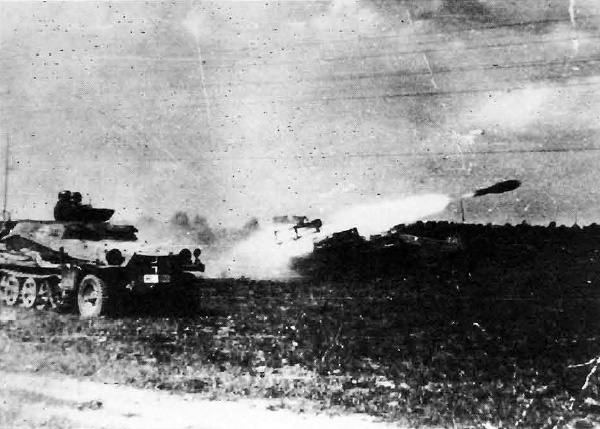 |
| Major Dr. Eckinger awards medals 10 men of S.R.113,
September 1941.centralsector.narod.ru |
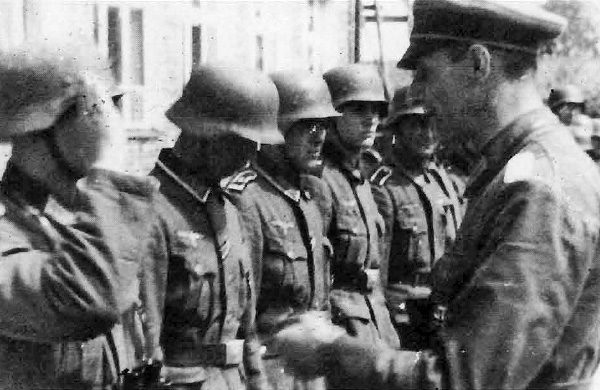 |
| Visibly moved, still showing signs of hard combat,
the shock-troop leader says farewell to his comrades, 1./S.R.113,
Leningrad area, September 1941. |
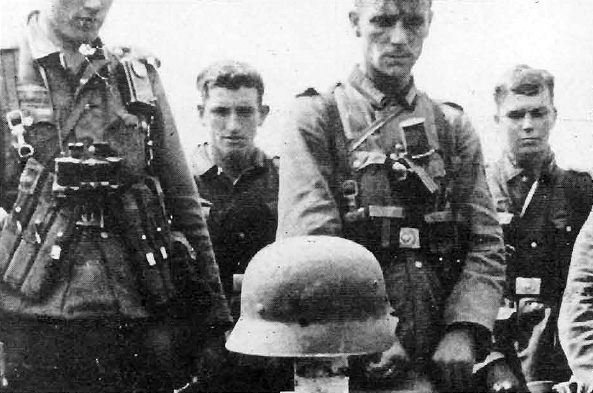 |
| A crossroads near Leningrad, September 1941. |
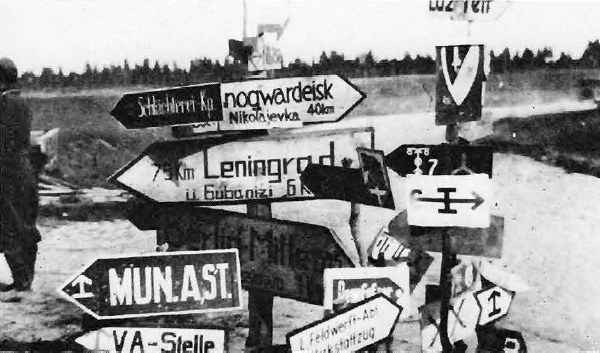 |
| Panzer Regiment 1 being transported from the north
to the center, to be unloaded in Vitebsk, 9./26/1941. |
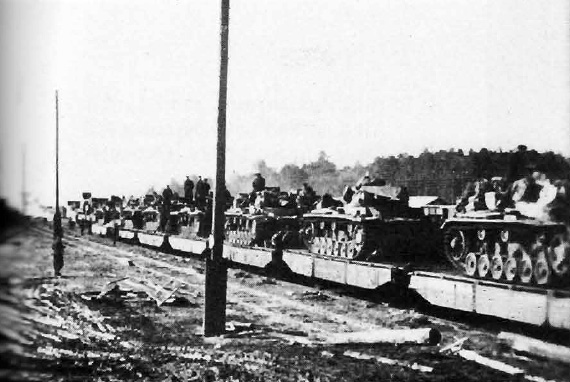 |
| Transporting a heavy 150mm infantry gun, to be unloaded
in Vitebsk on September 27. The picture shows eggs being exchanged.
At lower left is Ryff, above in the center Obergefreiter Nessler. |
 |
|





















